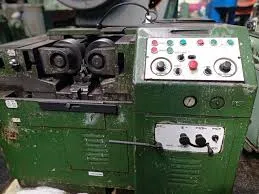
-
 Afrikaans
Afrikaans -
 Albanian
Albanian -
 Amharic
Amharic -
 Arabic
Arabic -
 Armenian
Armenian -
 Azerbaijani
Azerbaijani -
 Basque
Basque -
 Belarusian
Belarusian -
 Bengali
Bengali -
 Bosnian
Bosnian -
 Bulgarian
Bulgarian -
 Catalan
Catalan -
 Cebuano
Cebuano -
 Corsican
Corsican -
 Croatian
Croatian -
 Czech
Czech -
 Danish
Danish -
 Dutch
Dutch -
 English
English -
 Esperanto
Esperanto -
 Estonian
Estonian -
 Finnish
Finnish -
 French
French -
 Frisian
Frisian -
 Galician
Galician -
 Georgian
Georgian -
 German
German -
 Greek
Greek -
 Gujarati
Gujarati -
 Haitian Creole
Haitian Creole -
 hausa
hausa -
 hawaiian
hawaiian -
 Hebrew
Hebrew -
 Hindi
Hindi -
 Miao
Miao -
 Hungarian
Hungarian -
 Icelandic
Icelandic -
 igbo
igbo -
 Indonesian
Indonesian -
 irish
irish -
 Italian
Italian -
 Japanese
Japanese -
 Javanese
Javanese -
 Kannada
Kannada -
 kazakh
kazakh -
 Khmer
Khmer -
 Rwandese
Rwandese -
 Korean
Korean -
 Kurdish
Kurdish -
 Kyrgyz
Kyrgyz -
 Lao
Lao -
 Latin
Latin -
 Latvian
Latvian -
 Lithuanian
Lithuanian -
 Luxembourgish
Luxembourgish -
 Macedonian
Macedonian -
 Malgashi
Malgashi -
 Malay
Malay -
 Malayalam
Malayalam -
 Maltese
Maltese -
 Maori
Maori -
 Marathi
Marathi -
 Mongolian
Mongolian -
 Myanmar
Myanmar -
 Nepali
Nepali -
 Norwegian
Norwegian -
 Norwegian
Norwegian -
 Occitan
Occitan -
 Pashto
Pashto -
 Persian
Persian -
 Polish
Polish -
 Portuguese
Portuguese -
 Punjabi
Punjabi -
 Romanian
Romanian -
 Russian
Russian -
 Samoan
Samoan -
 Scottish Gaelic
Scottish Gaelic -
 Serbian
Serbian -
 Sesotho
Sesotho -
 Shona
Shona -
 Sindhi
Sindhi -
 Sinhala
Sinhala -
 Slovak
Slovak -
 Slovenian
Slovenian -
 Somali
Somali -
 Spanish
Spanish -
 Sundanese
Sundanese -
 Swahili
Swahili -
 Swedish
Swedish -
 Tagalog
Tagalog -
 Tajik
Tajik -
 Tamil
Tamil -
 Tatar
Tatar -
 Telugu
Telugu -
 Thai
Thai -
 Turkish
Turkish -
 Turkmen
Turkmen -
 Ukrainian
Ukrainian -
 Urdu
Urdu -
 Uighur
Uighur -
 Uzbek
Uzbek -
 Vietnamese
Vietnamese -
 Welsh
Welsh -
 Bantu
Bantu -
 Yiddish
Yiddish -
 Yoruba
Yoruba -
 Zulu
Zulu
Understanding the Functionality and Benefits of OEM Thread Rolling Machines in Manufacturing Processes
Understanding the Mechanism and Benefits of OEM Thread Rolling Machines
In the world of manufacturing, precision and efficiency are paramount. One of the innovative technologies that facilitate high-quality production is the OEM (Original Equipment Manufacturer) thread rolling machine. This piece of equipment is essential for producing threaded components with speed and accuracy, making it vital in various industries, including automotive, aerospace, and construction.
What is Thread Rolling?
Thread rolling is a cold forming process that creates threads on cylindrical workpieces. Unlike traditional machining processes that cut away material, thread rolling displaces the material to form the desired shape. This method is advantageous because it enhances material strength due to strain hardening and produces uniform and precise threads. OEM thread rolling machines are designed to process a variety of materials, including metals like steel, aluminum, and brass, providing manufacturers with versatility.
Working Principle of OEM Thread Rolling Machines
The operation of an OEM thread rolling machine is based on a simple yet effective principle. The workpiece, typically a rod or bolt, is fed into the machine, where it comes into contact with specially designed rolling dies. These dies are shaped in a way that matches the profile of the desired thread. As the workpiece is fed through the rolling dies, they rotate, applying pressure and causing the material to flow and take the shape of the dies. This process happens rapidly, allowing for high production rates.
There are two primary types of thread rolling machines flat die and cylindrical die machines. Flat die machines use two flat dies to roll the workpiece, while cylindrical die machines involve two or three cylindrical dies that are specifically shaped to produce different thread profiles. The choice of machine depends on the type of threads required and the specific production needs of the manufacturer.
Advantages of Using OEM Thread Rolling Machines
oem thread rolling machine working

1. Increased Strength Thread rolling enhances the mechanical properties of the material. The cold working process leads to an improvement in tensile and fatigue strength, making the rolled threads more durable than those produced by traditional cutting methods.
2. Reduced Material Waste Since thread rolling involves reshaping material instead of cutting it away, significantly less waste is generated. This not only optimizes resource usage but also reduces production costs.
3. Higher Production Rates OEM thread rolling machines can operate at high speeds, allowing manufacturers to produce large quantities of threaded parts in a short time. This efficiency is especially crucial in industries with high demand and tight deadlines.
4. Improved Surface Finish The thread rolling process typically results in a better surface finish compared to machining. This is essential for aesthetic purposes and can reduce the need for additional finishing processes, further saving time and costs.
5. Versatility OEM thread rolling machines can be adapted to produce various thread forms and sizes, making them suitable for different applications across multiple industries. This adaptability allows manufacturers to keep up with changing demands without needing multiple machines.
Conclusion
In conclusion, OEM thread rolling machines play a vital role in modern manufacturing by providing a method for producing high-quality threaded components efficiently and effectively. Their ability to enhance material properties, reduce waste, increase production rates, and improve surface finishes makes them an indispensable tool for manufacturers. As industries continue to evolve and demand greater precision and efficiency, the adoption of thread rolling technology is likely to grow, solidifying its place in the future of manufacturing.
